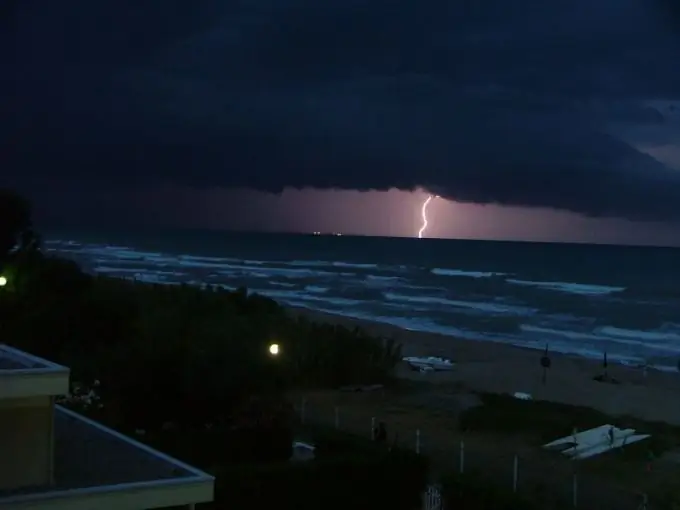Photographing lightning is not only a fascinating process, but it can also have some scientific value. In addition, photographs of thunderstorms are very informative and very beautiful.

It is necessary
- - film camera;
- - clamp or tripod;
- - release cable;
- - camera roll.
Instructions
Step 1
Digital cameras are of little use for shooting lightning. Take a film camera. The so-called "soap dish" - a film camera with automatic selection of shooting modes will not suit you either. It is important that the device has a manual exposure mode "B", or even better "T". The type of camera does not matter: it can be a mirror, rangefinder, and even the simplest scale camera.
Step 2
It is advisable to use a wide-angle lens when shooting, this will allow you to cover the largest part of the sky, which, in turn, will ensure the greatest chance of lightning striking the frame. In addition, lightning can be very long, and it is better if you manage to capture it in its entirety.
Step 3
Fully iris the lens. The force of a flash of lightning will be enough for a picture at aperture of 1/16 and even 1/22. Focus the lens at infinity. You can photograph lightning on any film: color, black and white, slide. Try to avoid using high-sensitivity films, as they do not benefit from shooting bright self-luminous objects, but they introduce coarse grain and contribute to the formation of unnecessary glare and highlights. Sensitivity of 50 - 200 ISO is quite enough.
Step 4
Keep the camera as still as possible. You can use a clamp or tripod. Use a cable to release the shutter whenever possible. Install the camera on a balcony, by an open window, anywhere else with a wide view of the area. Make sure that the unit is not exposed to rain drops, and there are no powerful lights or bright reflective objects in the field of view.
Step 5
Lightning is filmed at night. Point the camera to the part of the horizon where lightning is most likely to occur. Set the shutter speed (exposure) mechanism to the "T" mode and open the camera shutter. If the camera has only B mode, use the cable with a lock, otherwise you will have to hold the cable with your hand during the shooting.
Step 6
Wait for lightning to appear in the selected field of the frame and close the shutter. After that, you can transfer the film to the next frame. You can control the appearance of lightning in the frame both through the camera's viewfinder, and intuitively, observing the objects at which you pointed the camera.






